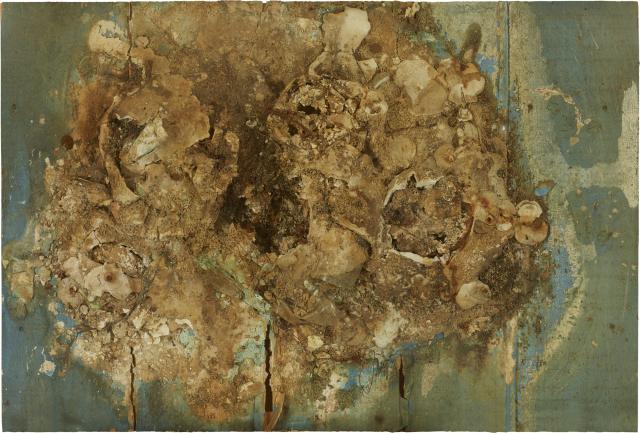Having moved to Iceland in 1957, the island motif started appearing in Dieter Roth’s drawings in the 1960s, and then became more frequent in the form of piles of concentrated rot. In his systematic use of dirty and perishable materials, for Sche...haufen (1968) he placed various superimposed organic layers on a wooden panel, allowing them to decompose, while slowing the phenomenon by imprisoning them in a plexiglas box.
In its evocative title, the three suspension dots mischievously interrupt the triviality of the German term used to designate a pile of detritus. In accordance with the principle that anything can become art, disintegration and mold form the basis of Roth’s esthetic process. In this sense, his practice is very similar to the Fluxus movement, for which material research and other elements take precedence over the aesthetic aspect.
Possibly inspired by the volcanic landscapes he knew in Iceland, his “islands” earned him much criticism for their revolutionary aspect, including the accusation that he was openly challenging the institutional practice of museums.
In its evocative title, the three suspension dots mischievously interrupt the triviality of the German term used to designate a pile of detritus. In accordance with the principle that anything can become art, disintegration and mold form the basis of Roth’s esthetic process. In this sense, his practice is very similar to the Fluxus movement, for which material research and other elements take precedence over the aesthetic aspect.
Possibly inspired by the volcanic landscapes he knew in Iceland, his “islands” earned him much criticism for their revolutionary aspect, including the accusation that he was openly challenging the institutional practice of museums.
